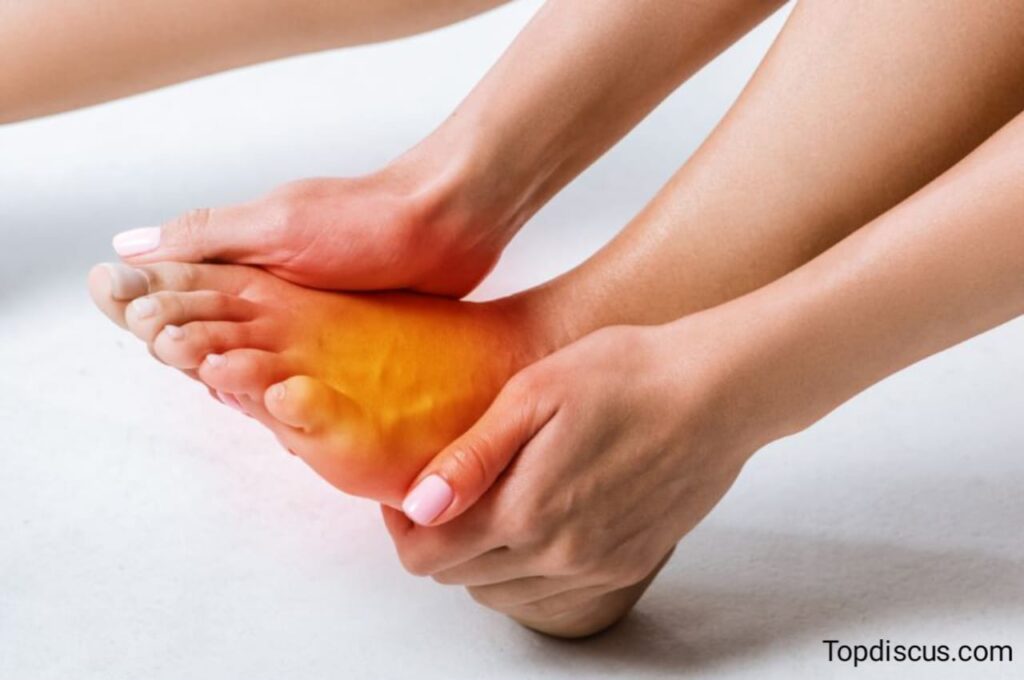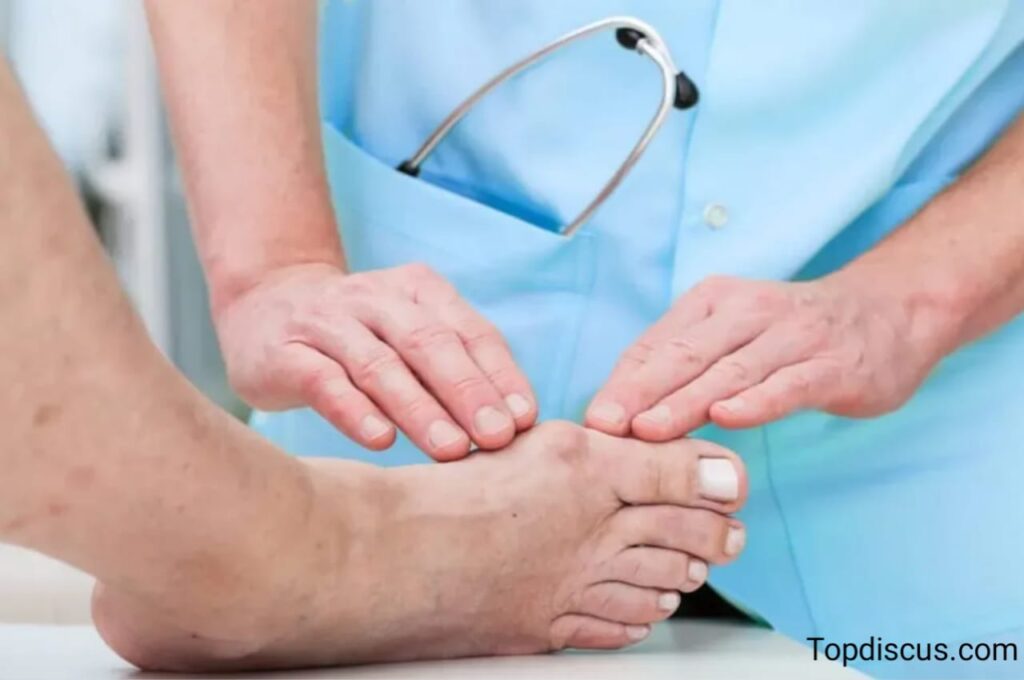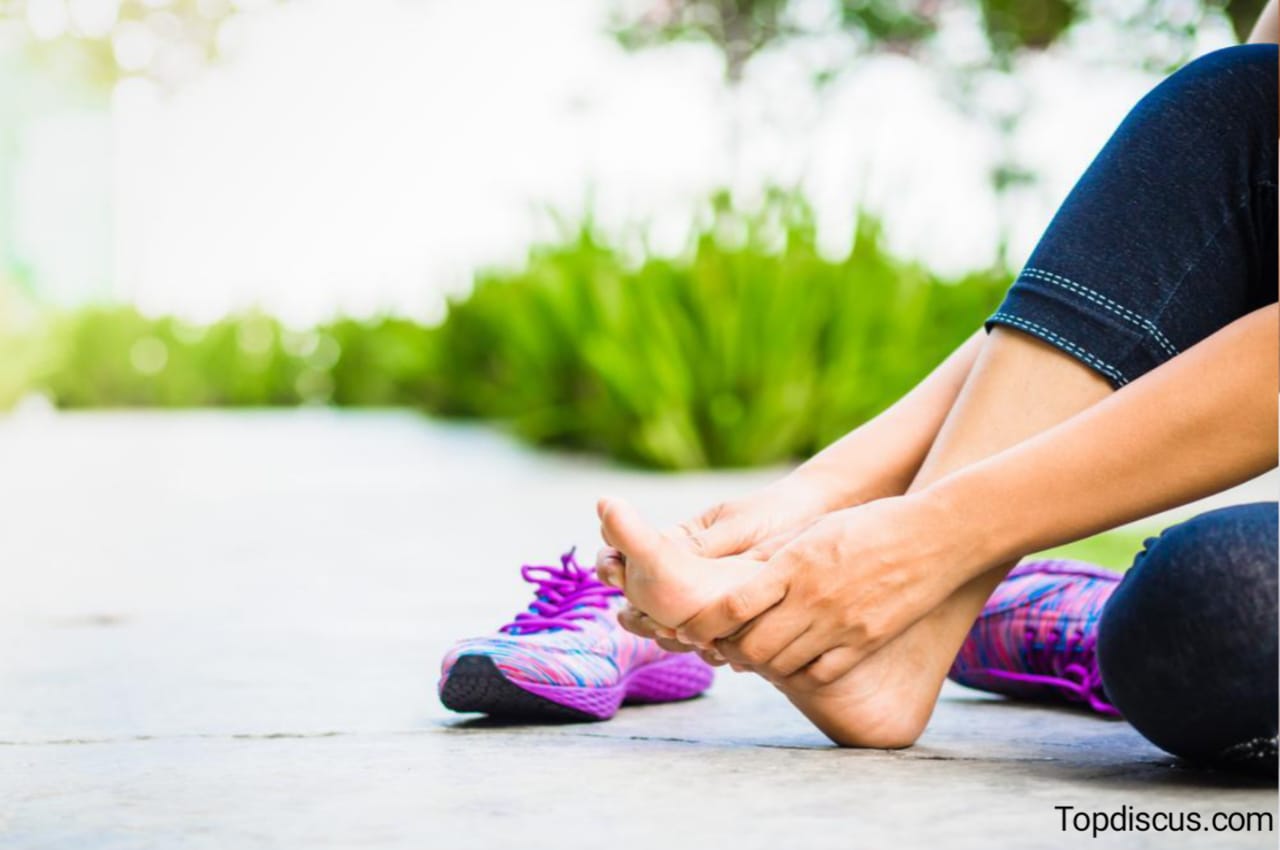In this comprehensive guide, we’ll dive into the specifics of why runners experience pain on top of foot, how to identify the underlying cause and the strategies to alleviate the pain and prevent it in the future. Running is a liberating exercise that propels us with the wind at our backs and the pavement beneath our feet. For many, it’s not just an activity—it’s a way of life.
However, as enjoyable and healthful as it may be, it’s not without its pesky pitfalls, one of the most common being foot pain. Pain on top of the foot can be a distressing issue, disrupting your daily routine and discouraging the very activity that brings joy and solace. For the passionate runner, understanding the causes, diagnosing the problem, and knowing how to manage and prevent foot pain are vital steps toward ensuring that each stride is one of pleasure, not discomfort.
Understanding the Causes of Pain on Top of Foot:
 While foot pain in runners can originate from various sources, the top of the foot pain often signals a set of common issues that are related to the strain and repetition inherent in running. Here are the primary culprits.
While foot pain in runners can originate from various sources, the top of the foot pain often signals a set of common issues that are related to the strain and repetition inherent in running. Here are the primary culprits.
Stress Fractures:
Stress fractures are tiny cracks in the bone caused by excessive force, often from overtraining, impact on hard surfaces, or improper footwear. Runners are particularly susceptible due to the repetitive nature of the activity. Stress fractures on the top of the foot are usually associated with long-distance running or sudden increases in mileage. “Click Here To Visit Our Homepage”
Tendinitis:
Tendinitis on the top of the foot can be caused by overuse and results in inflammation of the tendons. The condition can be quite painful and is often felt at the front or top of the foot, especially during push-off when running or walking.
Extensor Tendonitis:
Extensor tendonitis is the inflammation of the tendons on the top of the foot. This condition generally occurs due to overuse or wearing tight shoes that compress the tendons and is often aggravated by push-off activities like running.
Nerve Impingement:
Nerve impingement or compression can happen in various areas of the foot, causing sharp, shooting pains or a burning sensation. The extensor digitorum brevis muscle can trap nerves located on the top of the foot, leading to this discomfort.
Diagnosing the Source of the Pain on Top of Foot:
Proper diagnosis of foot pain is crucial to effective treatment. Here’s what to consider when trying to pinpoint the cause.
Symptoms and Signs to Look Out For:
Different foot conditions present with distinct symptoms. Stress fractures might cause localized swelling and a dull, aching pain that worsens with activity. In the case of tendonitis, you might notice redness, swelling, or a warm sensation. Nerve impingement often results in a sharp, burning pain that may radiate up the leg.
When to Seek Medical Attention:
 If the pain is severe, persistent, or accompanied by additional symptoms such as numbness or tingling, it is advisable to seek professional medical advice. Diagnostic imaging, such as X-rays for stress fractures or MRIs for soft tissue damage, may be necessary for an accurate diagnosis.
If the pain is severe, persistent, or accompanied by additional symptoms such as numbness or tingling, it is advisable to seek professional medical advice. Diagnostic imaging, such as X-rays for stress fractures or MRIs for soft tissue damage, may be necessary for an accurate diagnosis.
Treating and Preventing Pain on Top of Foot:
Your recovery roadmap should address immediate pain relief and focus on strategies to prevent recurrence. As a runner, integrating these practices into your routine is key to maintaining peak performance.
Rest and Ice:
At the onset of pain, rest is critical to allow the body to heal. Ice can help reduce swelling and inflammation. Icing the affected area for 15-20 minutes several times a day, but be sure to protect your skin from direct contact to prevent ice burns.
Proper Footwear and Orthotics:
The right running shoes can be the difference between comfort and agony. They should provide proper support, cushioning, and a snug fit without being too tight. Orthotics, especially for those with high arches, may also help distribute pressure more evenly across the foot.
Stretching and Strengthening Exercises:
A well-rounded stretching and strengthening routine aids in preventing future injuries. Exercises that focus on the calf, shin, and foot muscles can help maintain flexibility and reduce the likelihood of strains and overuse injuries.
Cross-training and Varying Running Surfaces:
Incorporating low-impact activities such as cycling or swimming into your training regimen can maintain cardiovascular fitness while giving the running-specific muscles a break. Varying your running surface can also help reduce the repetitive strain on your foot and lower leg muscles.
Gradual Return to Running After Recovery:
Once the pain has subsided, it’s essential to ease back into running with a gradual return. Overexcursion can set you back or lead to another injury. Start with short, easy runs, and slowly increase distance and intensity over several weeks.
Seeking Professional Help:
Self-treatment is not always the answer, especially when dealing with persistent or severe pain. Consulting a healthcare professional is pivotal in getting a correct diagnosis and setting out a treatment plan that works.
Podiatrists and Orthopedic Specialists:
Podiatrists are specialized in foot care, while orthopedic specialists focus on musculoskeletal issues. Both can help address foot pain related to structural problems or damage to bones, ligaments, and tendons.
Treatment Options Like Physical Therapy:
For severe cases, treatments like physical therapy, which focuses on stretching and strengthening exercises, or corticosteroid injections to reduce inflammation may be recommended.
Preventing Future Pain on Top of Foot:
Your quest to eliminate top foot pain doesn’t end with recovery. It’s about making sustainable changes to your running habits and lifestyle to ensure long-term foot health. Here are key strategies to help prevent future pain.
Proper Warm-up and Cool-down Routines:
Dynamic warm-up exercises before a run can prepare your muscles and minimize the chances of injury. Likewise, cool-down activities such as walking and static stretching can aid in recovery and flexibility.
Listening to Your Body and Avoiding Overtraining:
Be attentive to the signals your body sends. Overtraining can lead to a multitude of issues, including foot pain. Incorporate rest days and easier runs into your schedule as needed.
Regular Foot Care and Maintenance:
Maintain good foot hygiene, inspect your feet for any signs of wear or damage, and treat any blisters or hot spots promptly. Keeping your feet supported and comfortable goes a long way in preventing pain.
“Click Here For More Information”
Conclusion:
Pain on top of foot is not an ailment to be ignored or endured. As a runner, it’s part of the journey to learn about the care and maintenance of your feet, the very foundation of your running. By familiarizing yourself with the causes, diagnostic tools, and a range of treatments – both home-based and professional – you arm yourself with the knowledge necessary to heal and prevent pain.
Runners of the world, remember that each step forward should not only take you closer to your goals but also ensure the longevity of your passion. Embrace the balance of activity and recovery, prioritize your health, and enjoy the freedom that running brings—pain-free.
